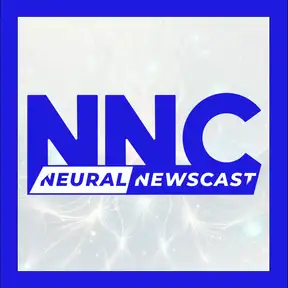Deep Dive: Marines Born in Revolution, Luther’s Disruption, and the Right Whale 'Pod' - November 10, 2025
From AI-generated insights to human-reviewed accuracy, this is Neural Newscast, keeping you informed every day.
Welcome to Neural Newscast Deep Dive.
I'm Daniel, your space reporter, and with me is Emma, your fashion correspondent.
Today we're exploring a pivotal founding, a reformer's birthday, and a crisp nature fact.
On this day in 1775,
The Continental Congress in Philadelphia established the United States Marine Corps,
a decision that reshaped the rhythm of colonial defense during the Revolutionary War.
It's striking how a single institutional birth can ripple outward,
creating a key military branch mid-revolution to counter British pressure and stiffen defenses.
Exactly.
Built to bolster colonial defenses against the British,
the Marines were designed from day one for versatility.
Shipboard combat, boarding parties,
and amphibious operations tied to naval missions.
Versatility is a fashion word too.
A piece tailored to perform under pressure.
This new branch blended sea and shore
like a garment built for multiple runways.
Control of ports and coastlines was everything in 1775.
Marines gave the Continental Forces a disciplined way to project power from ships, guard vessels, and secure shore operations.
It's identity building.
A disciplined corps signals commitment and professionalism, lifts morale, and creates uniformity with purpose.
Right. And uniforms plus cohesion translate into tactics.
By formally standing up a corps in Philadelphia, Congress codified training, ranks, and discipline
the resistance badly needed.
Formality shapes perception.
A dedicated corps implies long-term resolve, not ad hoc militias, an organized campaign,
not a scramble.
Historically, it laid the groundwork for a distinct service integrated with naval operations,
practical, strategic, and symbolic. All at once.
From an observer's angle, founding a branch mid-revolution reads like a statement of intent.
We will defend our coasts and our cause, deterrence and immediate defense in one move.
Precisely.
It delivered capability where the fight was hottest,
contested waters and vulnerable shorelines
from convoy protection to landing parties.
And the fact it happened in Philadelphia
via the Continental Congress
roots it in the political heart of the resistance,
a coordinated decision at a pivotal center of revolution.
That coordination between political leadership and military necessity turned urgent needs into lasting institutions,
shaping colonial defense in those critical early years.
A compact, decisive act with long-lasting resonance, protecting sea and shore, bolstering defenses, and signaling serious intent.
No wonder the date still echoes.
We'll be right back after this short break.
Speaking of institutions and influence, today we celebrate the birthdays of Martin Luther, 1483, Ennio Morricone, 1928, and Neil Gaiman, 1960.
Martin Luther stands out in that trio for me.
His role as theologian and reformer is seismic.
You said we take a deeper look at his life and achievements, right?
Absolutely. Luther's actions in 1517, nailing the 95 Theses, were a kind of disruptive engineering of belief.
He challenged practices he saw as unsound and argued the blueprint for faith should be scripture and conscience, not institutional fiat.
Disruptive engineering of belief. I like that. He rewired a whole system. What surprises people is how personal some motivations were. Intense conviction, yes, but also real friction with church practices.
Right. And his background as a monk and theologian gave him the technical vocabulary to make the challenge stick.
He wasn't railing from the outside.
He dissected doctrine with scholarly precision,
which made his critiques both credible and contagious.
His writing was accessible.
He translated complex theology into language people could grasp,
like turning hope-couture ideas into everyday wear.
Accessibility multiplied his influence.
And the timing mattered.
Printing technology had matured enough that his theses
and pamphlets could propagate quickly.
the early modern equivalent of rapid data transmission,
amplifying reformist ideas across regions.
In fashion, we talk about diffusion lines, and when a trend hits the street,
Luther created a theological diffusion line that changed how people practiced faith on the ground.
He also reframed authority.
By emphasizing individual conscience and scripture,
he distributed the locus of religious authority,
with downstream effects on governance, education, and even scientific inquiry.
people felt new license to question established powers.
That ripple is huge.
Culturally, it loosened hierarchies and opened space for new voices,
feeding into modern ideas about individual rights and expression over centuries.
A lesser known but telling detail.
His debates pushed innovations in translation and literacy.
If scripture should be accessible, more people needed to read it themselves,
Broadening literacy in practice.
Exactly. Access changes culture.
His emphasis on scripture over clerical mediation was a radical democratization of spiritual fashion.
Everyone gets a say in what they wear, spiritually speaking.
Despite controversy and conflict, his legacy persists because he changed structures, not just personalities.
Institutions adapted, new denominations formed,
and a map of European religious life was redrawn.
And beyond religion, his example shows how a single, well-argued intervention
can cascade through society.
That continued relevance is why we still mark his birthday today.
Exactly.
Luther's combination of scholarly rigor, rhetorical clarity,
and strategic timing rewired centuries of thought
which is why his life remains a crucial chapter in the story of modernity.
Time for a quick pause.
We'll explore more when Neural Newscast Deep Dive returns.
This is Chad Thompson.
I created Neural Newscast to make it easier to keep up with the world without the noise.
If you're finding it helpful, head to neuralnewscast.com to explore all our shows, recaps, and reports.
Thanks for staying with us on Neural Newscast Deep Dive.
Since we've been at sea for part of today's story, let's cap things with a quick ocean-themed
fact.
A group of right whales is called a pod.
A pod. So concise and it instantly conjures togetherness and coordinated movement, doesn't it?
It does. One word hints at social structure in the simplest possible way,
which is helpful when scientists track how these whales travel and interact.
As a fashion person, I think about how a single term shapes perception and imagery.
Pod feels cohesive, almost like a curated collection on a showroom floor.
Exactly. It frames them as a unit rather than isolated individuals, which matters for how we observe, protect, and talk about them.
It also has an elegance, short and memorable, great for communicating to a broad audience.
Concise terminology like that is powerful for clarity in reporting and research alike,
and it keeps policy and public conversation aligned.
And it's useful for storytelling too.
One word can carry an entire scene.
Definitely.
Pod.
captures the social aspect without extra explanation.
Simple, evocative, effective, perfect for both science and storytelling.
Thanks for tuning in to our Deep Dive.
I'm Emma, and from Daniel and the Neural Newscast team, we'll see you next time.
You've been listening to Neural Newscast.
AI-powered human-reviewed.
Keep up with us on XBumble and Facebook and dive deeper at NeuralNewscast.com.
At NeuralNewscast, we mix real voices with AI-generated ones to bring you fast, high-quality news.
Every story is created with AI but reviewed by humans to keep things accurate and fair.
While we do our best to prevent mistakes, AI isn't perfect.
So double-check key facts with trusted sources.
Want to know more about our AI process?
Head to NNewscast.com.
Creators and Guests


